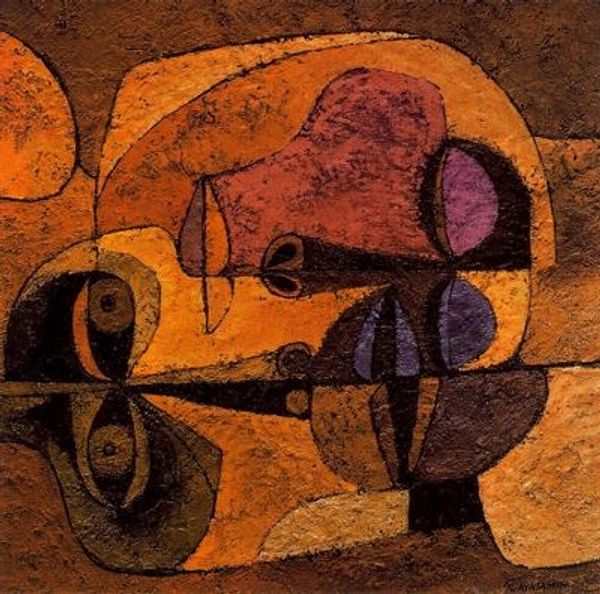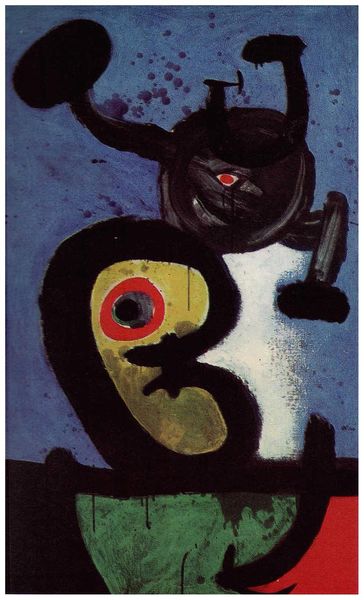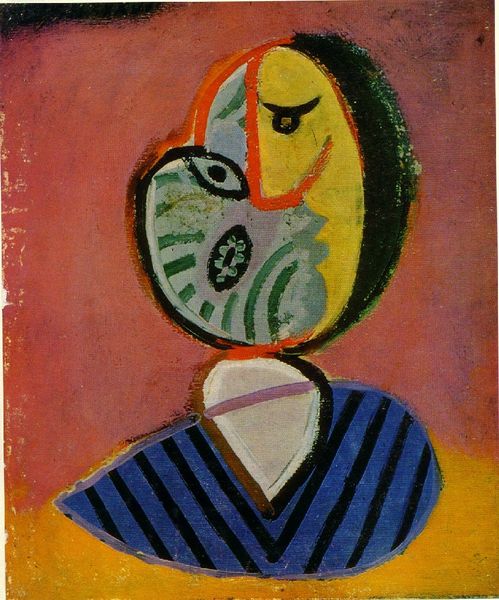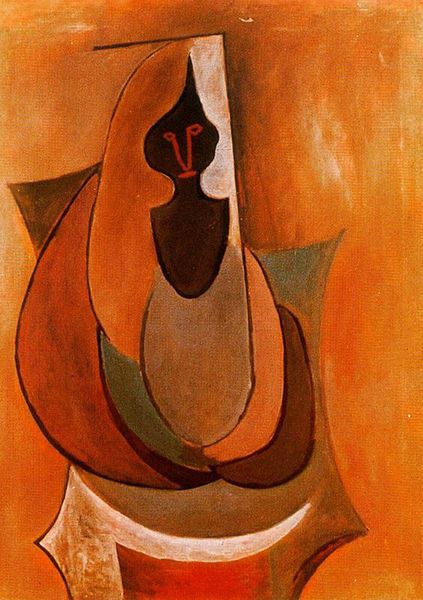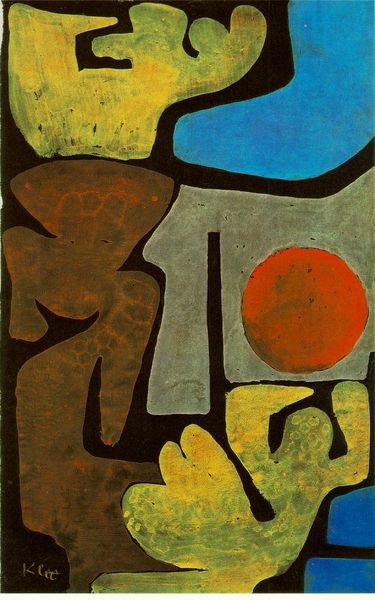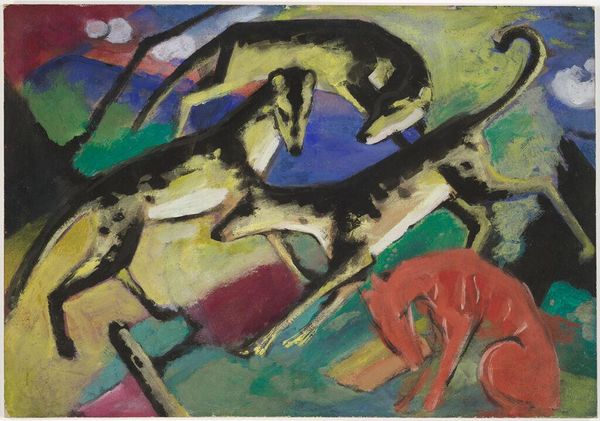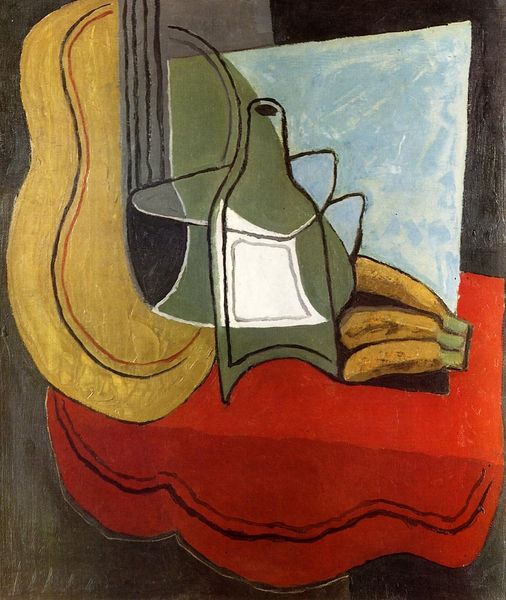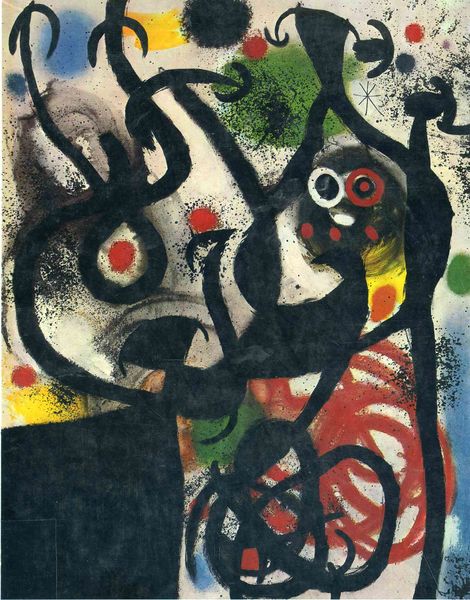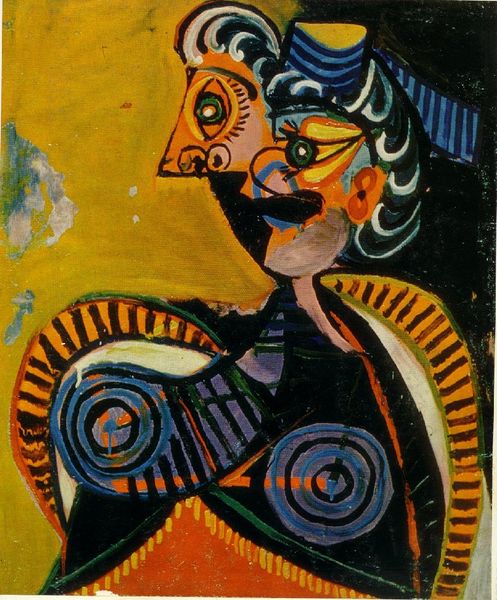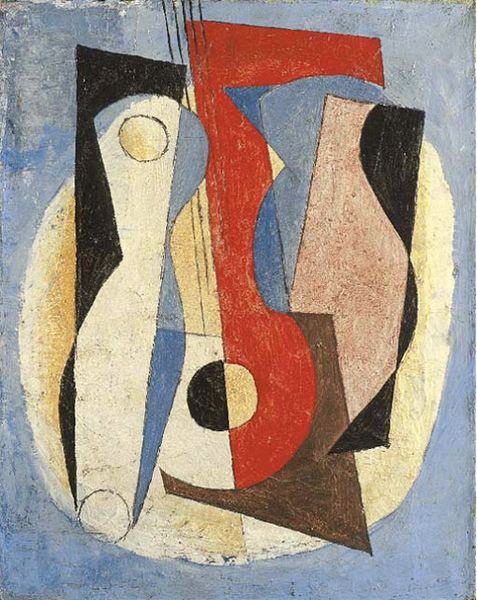
painting, oil-paint
#
portrait
#
cubism
#
abstract painting
#
painting
#
oil-paint
#
oil painting
#
abstraction
#
modernism
Dimensions: 16 x 22 cm
Copyright: Pablo Picasso,Fair Use
Curator: Gazing upon this striking oil on canvas from 1929, executed by Pablo Picasso, one immediately registers the disjunctive angularity that pervades the composition. It is appropriately named, “Untitled”. Editor: It assaults the senses! There’s an almost primal scream latent within those clashing angles and intense hues. Is it meant to disturb? Curator: Ah, a perfect response! Notice the planes of color colliding. Picasso uses a limited palette here – predominantly ochre, blues, and that fierce vermillion – yet each hue is charged, intensified through its juxtaposition with the others. Editor: Knowing the time it was created, does that have anything to do with rising political angst as Europe inched towards World War II? Are we seeing social instability manifest in the breakdown of form? Curator: Undeniably. Picasso’s work often reflects the era’s socio-political undercurrents, filtering anxieties through the fracturing of the human figure so evocative of the cubist idiom. Yet, looking closer, observe the sinuous curves attempting to negotiate their space amid the sharper elements. There's an unresolved tension. Editor: The figure almost seems trapped, doesn’t it? Held within the grasp of the painting’s formal demands. The hands are rendered as strange claws, holding something or someone tightly, or maybe just gripping, clinging for life. Curator: Precisely! The fragmentation also recalls early surrealist explorations, the breakdown of representation reflecting the fractured psyche of the post-war subject, the legacy of trauma shaping his visual vocabulary. Editor: So it’s more than just an arrangement of shapes. Picasso turns form into a site where cultural wounds are visibly excavated. It speaks, then, to the power of art as not merely representational but as symptomatic of its age. Curator: I would contend, it also offers us a glimpse of enduring aesthetic power residing within the deliberate disharmony. It moves the eye. Editor: Yes, that formal dance mirrors a larger, darker waltz across Europe.
Comments
No comments
Be the first to comment and join the conversation on the ultimate creative platform.
